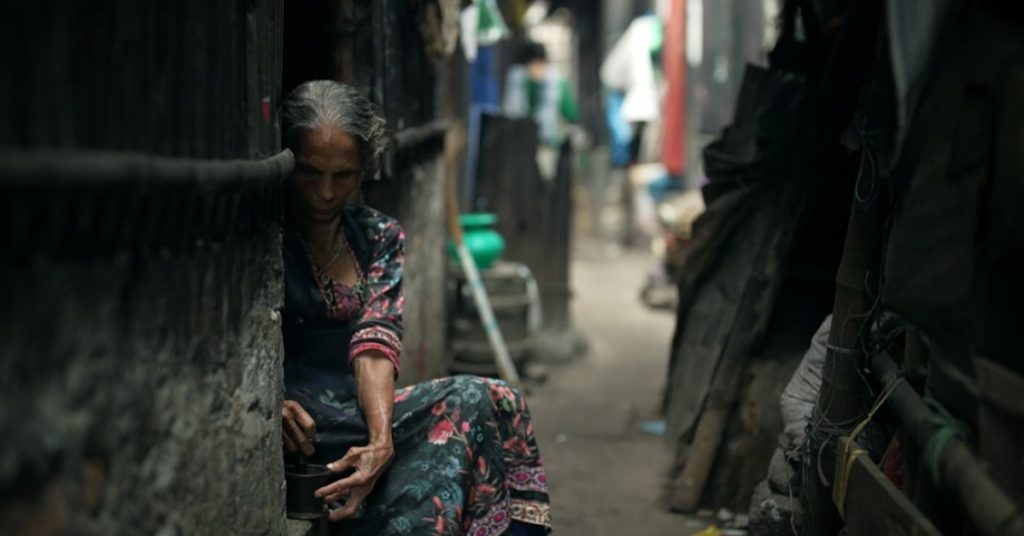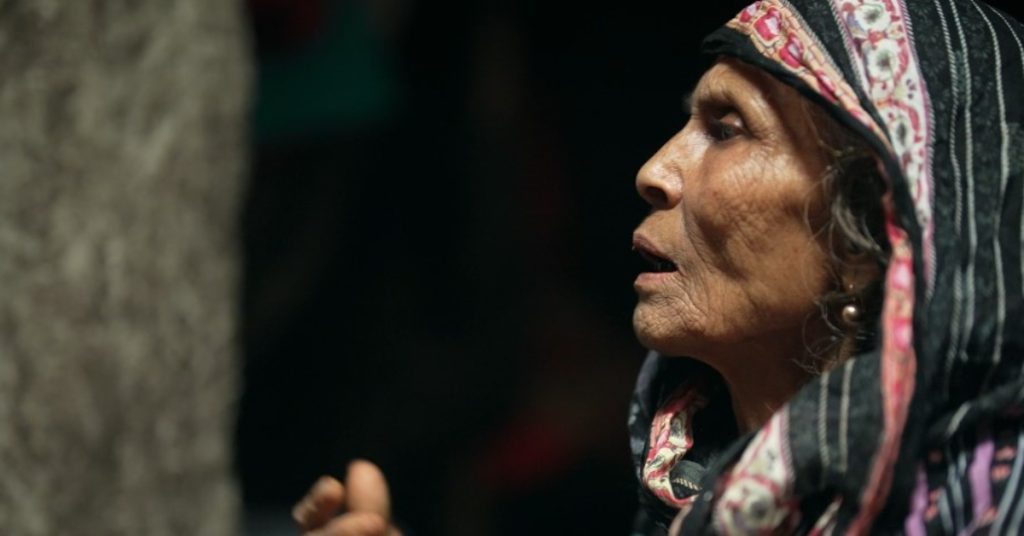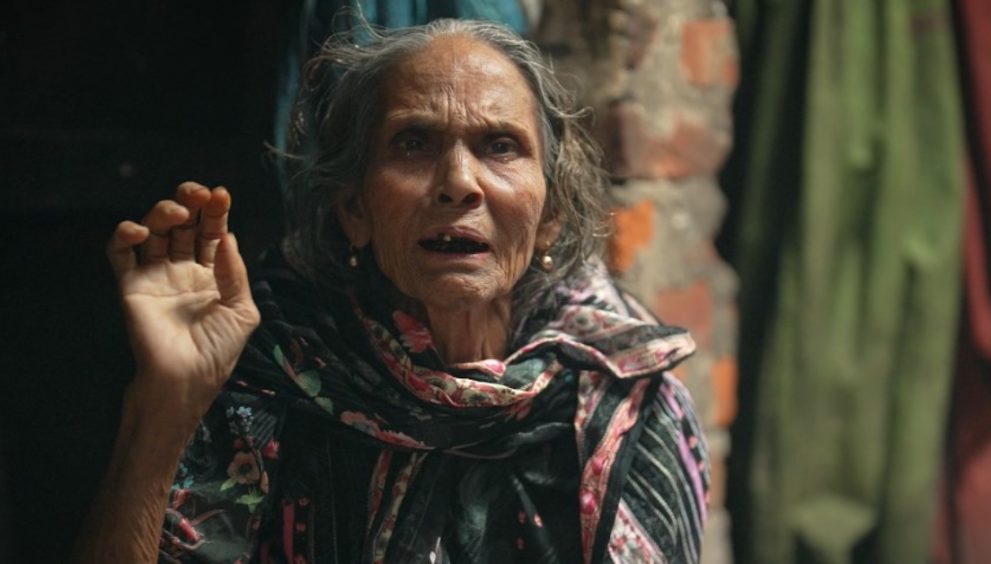Anwara Begum lives in a small one-room house beside a narrow road in Dhaka’s Kalyanpur slum. The light must always be kept on, even during the day, because the house has no windows, and sunlight never enters. Frequent load shedding means there is often little electricity during the day, leaving the room mostly in darkness.
Anwara keeps chickens in a cage on the narrow road in front of the house. As she does every morning, she sits in front of her door feeding rice to the chickens. Now 75 years old, she wears a very worn saree.
In 1973, Anwara came to Dhaka from Bhola, a district along the Bay of Bengal, with her four children. At that time, her home was destroyed by flooding from the Meghna River.
“In Bhola, some people from my area helped put me and my children on a launch ship. The next morning, we arrived at Sadarghat in Dhaka. I didn’t know where to go with my children. My husband stayed back in Bhola,” she recalled.
“After arriving, I wandered through various parts of Dhaka. For a while, I stayed with someone from my village in Tongi. Then I moved to Motijheel, where we lived in a tiny room behind a cinema hall. We had little food for many days—often just a loaf of bread. Sometimes, the janitor at the cinema would give me food. Later, I found work as a housekeeper in Mohammadpur. Eventually, my husband joined me in Dhaka, but soon after, he fell ill and passed away.”
Anwara paused, taking deep breaths as she recalled her days of hardship and starvation. After living in different parts of the city, she finally settled in Kalyanpur slum in 1988. She has now lived there for 36 years and has been in Dhaka for a total of 51 years.

Bangladesh is one of the most climate-vulnerable countries in the world. According to the World Health Organization (WHO), more than 7 million people in Bangladesh have been displaced due to climate change since 1971. Anwara Begum is one of these climate migrants.
Reflecting on her struggles, Anwara said, “All my life, I worked as a domestic worker and a brick breaker, earning very little. Now, I have no physical strength to work. I rely on my daughters, who support me with their meager income. In my old age, I have nothing. I am helpless.”
Tears filled Anwara’s eyes as she spoke, wiping them away with the edge of her saree. Her eldest daughter, Ratna, handed her a glass of water. Anwara drank it slowly, sitting in front of her door.
Now, Ratna looks after her. Ratna’s husband abandoned her, leaving her with a daughter, Shiuli, who is now 13 years old and studying in seventh grade at a government school in Kalyanpur. The three of them—Anwara, Ratna, and Shiuli—live together in this one-room home.
Anwara mourned, “We lost everything in the village, and even here in the city, we have no proper place to live. Our only home is this filthy, unsanitary slum. I’ve spent my entire life here.”
“I came to Dhaka hoping for a better life, but nothing changed. My life of hardship has remained just that—a life of hardship,” she added.
“I never received a single taka of help from anyone. The river didn’t just take our house, it destroyed our entire lives.”
She ended with a heavy sigh, “Now, I don’t even have a place for my own grave.”

The Uncertain Future of Climate Migrants
According to a 2021 World Bank report, climate change is projected to displace over 13 million people in Bangladesh by 2050.
Former Mayor of Dhaka South City Corporation, Fazle Noor Taposh, claims that 2,000 people move to Dhaka every day, 70% of whom are climate migrants.
Climate migrants from different parts of the country gather in this challenging city for survival. But they only face an uncertain future in a place that lacks even the most basic civic facilities.
(Md Ibrahim Khalilullah is an Investigative Journalist and The Rockefeller Fellow)


